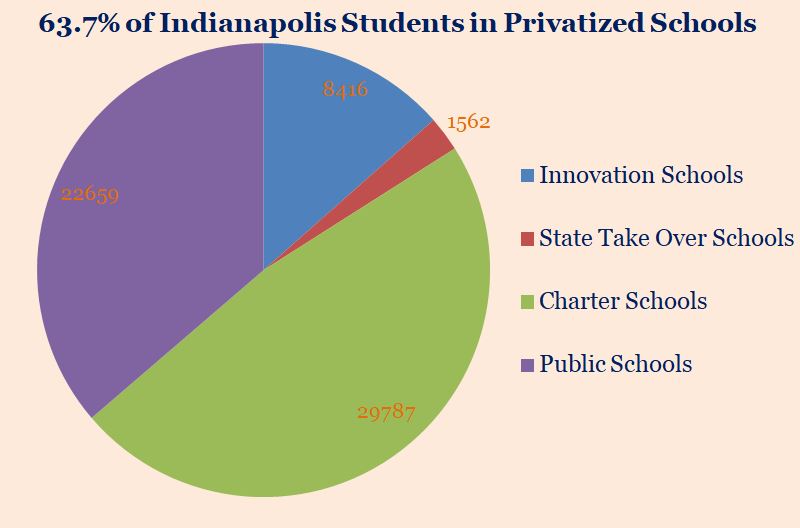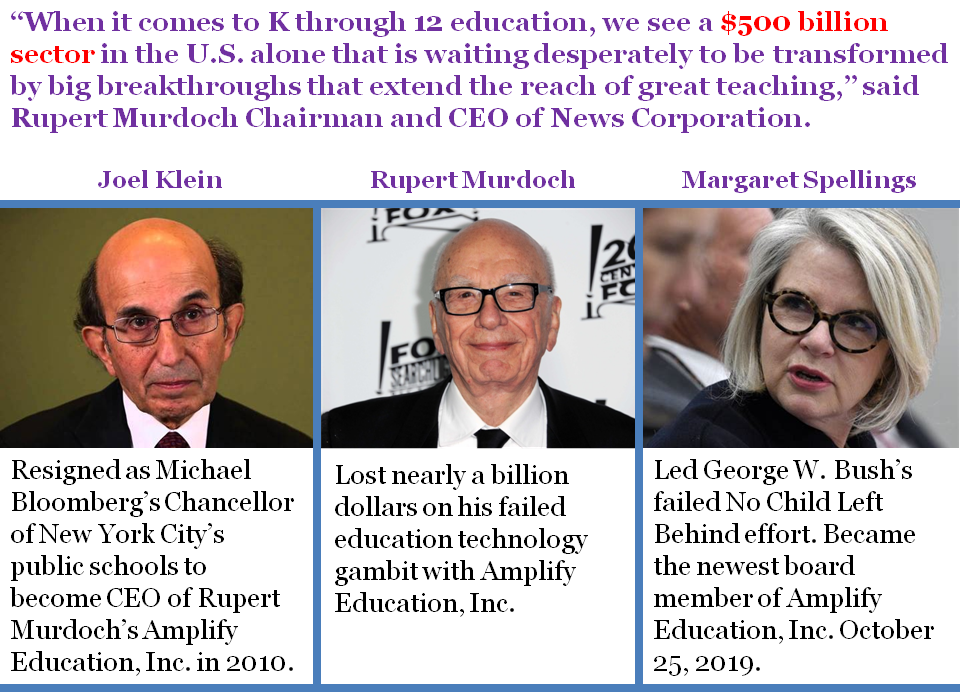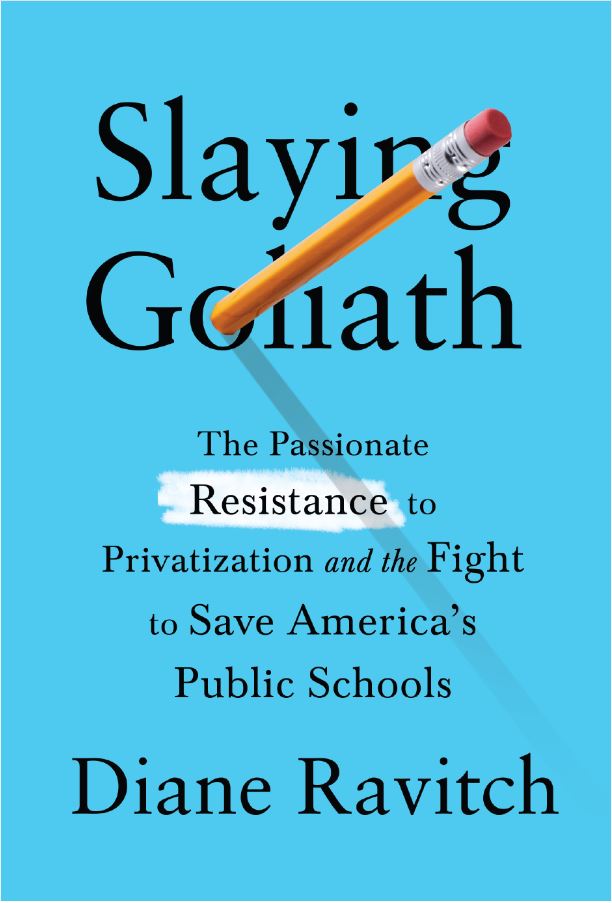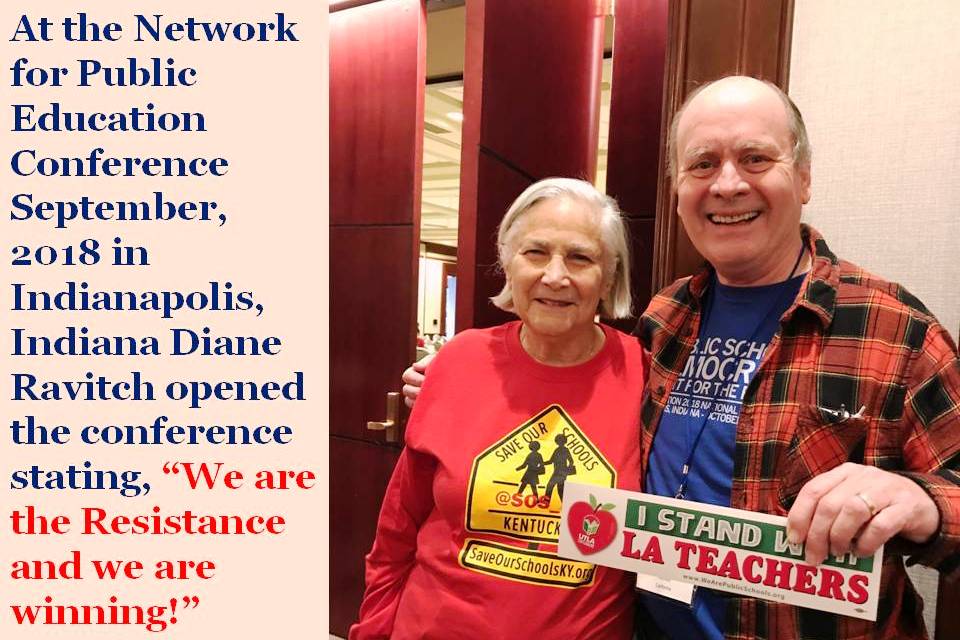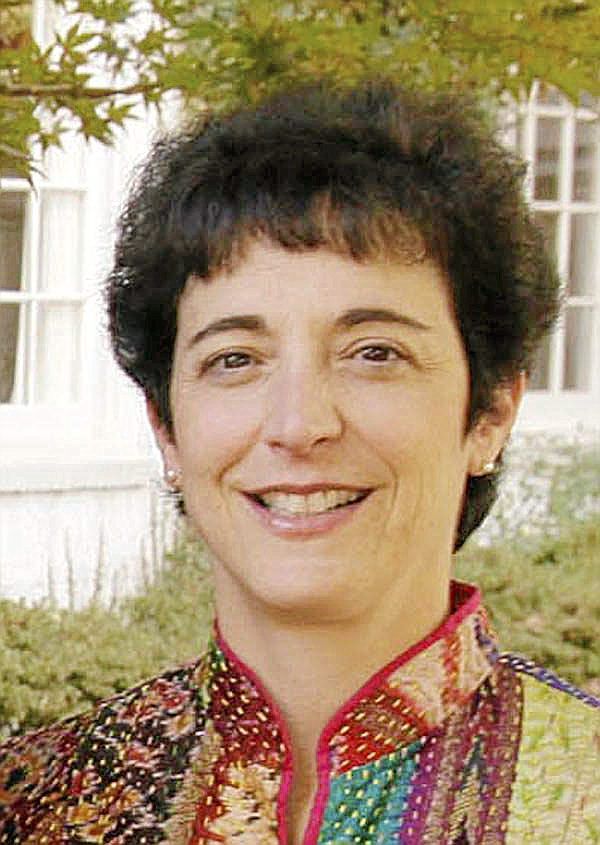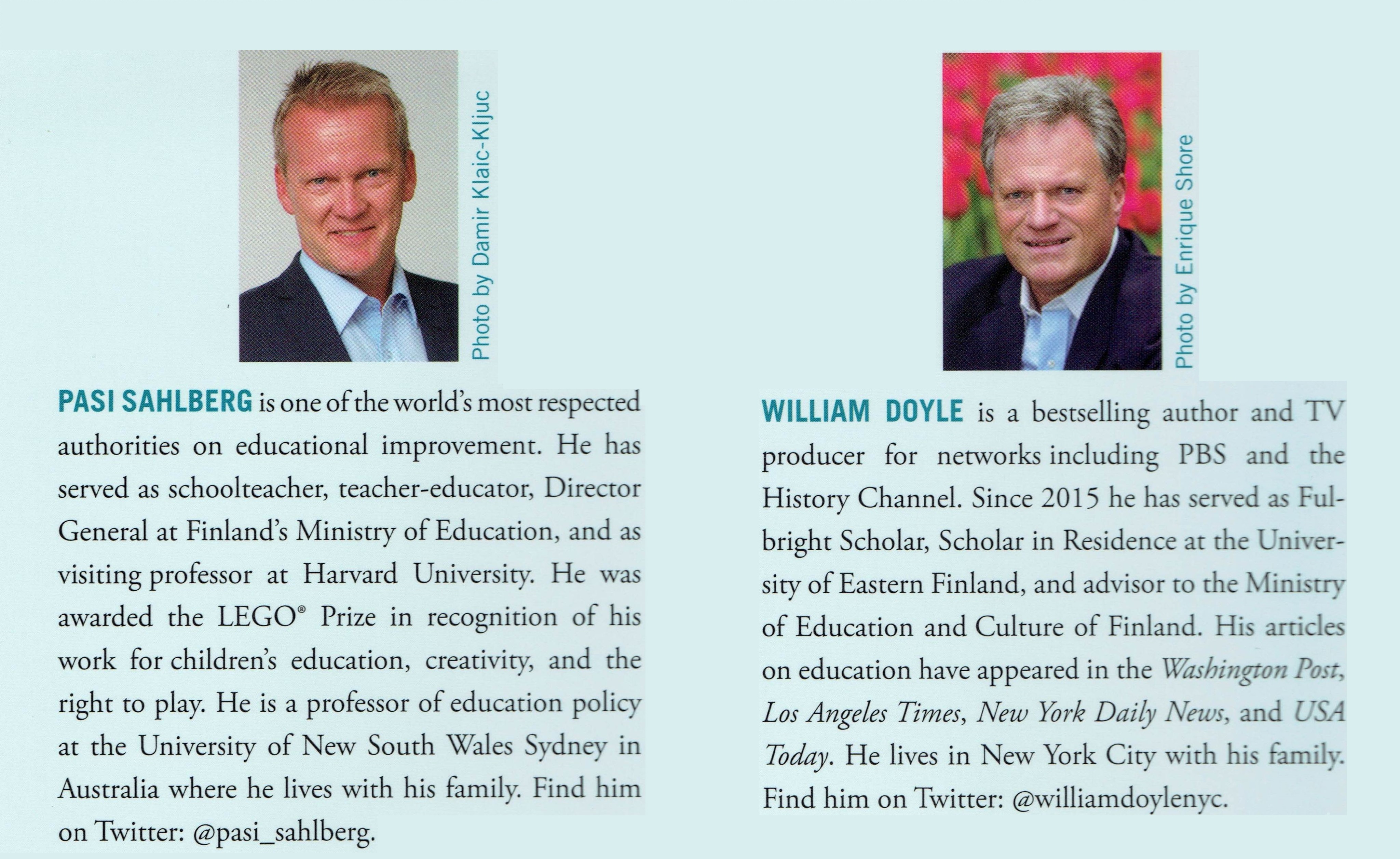By Thomas Ultican 9/28/2022
Community school developments are surging in jurisdictions across the country. Since 2014, more the 300 community schools have been established in New York and this month Education Secretary Miguel Cardona was touting them at an event in Pennsylvania. In May, the California State Board of Education announced $635 million in grants for the development of these schools and in July, they disclosed a $4.1 billion commitment to community schools over the next seven years. However, some critiques are concerned about a lurking vulnerability to profiteering created by the Every Student Succeeds Act (ESSA).
What are Community Schools?
For decades America has turned a blind eye to the embarrassing reality that in many of our poorest communities the only functioning governmental organization or commercial enterprise is the local public school. No grocery stores, no pharmacies, no police stations, no fire stations, no libraries, no medical offices and so on leaves these communities bereft of services for basic human needs and opportunities for childhood development. Community schools are promoted as a possible remedy for some of this neighborhood damage.
The first priority for being a community school is being a public school that opens its doors to all students in the community.
A Brookings Institute study explains,
“According to the Coalition for Community Schools, a community school is ‘both a place and a set of partnerships between the school and other community resources. Its integrated focus on academics, health and social services, youth and community development, and community engagement leads to improved student learning, stronger families, and healthier communities.’ In community schools, every family and community member is a partner in the effort to build on students’ strengths, engage them as learners, and enable them to reach their full potential.”
The Brookings article notes that although community schools have a different looks in different communities they all have four common pillars: (1) “Expanded and enriched learning time,” (2) “Active family and community engagement,” (3) “Collaborative leadership and practices” and (4) “Integrated student supports.”
That means health care including vision and hearing is available through the schools as well as family housing and nutrition support. Families and other community members are encouraged to contribute both labor and leadership to the schools. Community services provided by governmental agencies also have site based coordinators.
Joshua Starr is the CEO of PDK International and the former Superintendent of Montgomery County Schools in Maryland. In a recent article for Kappan, he claims to “strongly support the community school model” but perceives some speed bumps. He asks, “Does the community school movement suffer from the “give me more stuff” syndrome? And concludes it probably does. However, his two biggest concerns are (1) the use of resources and (2) the use of data.
He points out that there are multiple streams of revenue coming into Title I schools and worries that these streams, meant in part to promote parental engagement, need to be administered wisely. He makes clear his belief in the importance of family engagement but asks, “However, before agreeing to fund additional staff positions, shouldn’t we make sure that every staff member who has a family-facing responsibility in their job description is actually doing that work (and doing it effectively)?”
Starr claims that by the end of the first quarter of 1st grade, it is possible to identify whether or not a student is on track to graduate. He notes that a student who is failing every class and has accumulate many absences is quickly noticed but the students who fail one class and only has a few absences are often overlooked.
He concluded,
“All of this is to say that the process of identifying and responding to students’ needs is enormously complicated. Ideally, schools will begin with early warning indicators to identify kids who aren’t on track to graduate on time, teachers and staff will know how to interpret that data, school leaders will give them time and resources to build relationships with students and families, and school teams will coordinate among district resources and community assets to provide the supports children and families need.”
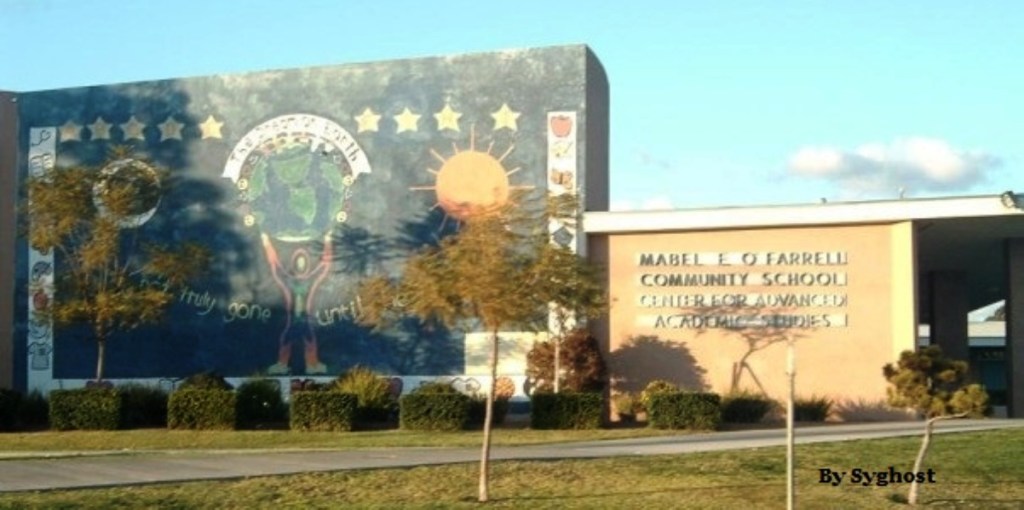
Profiteering Hawks Looking to Feast on Community Schools
There has been some encouraging anecdotal evidence from several of the original community schools. In March, Jeff Bryant wrote an article profiling two such schools for the Progressive, but there are also bad harbingers circling these schools. In the same paper from Brookings quoted above, there is a call to scale the “Next Generation Community Schools” nationally. They advocate engaging charter school networks and expanding ArmeriCorps. Brookings also counsels us, “Within the Department of Education, use Every Student Succeeds Act (ESSA) guidance and regulations to advance a next generation of community schools.”
Brookings was not through promoting a clearly neoliberal agenda for community schools. Their latest paper about them notes,
“There is a significant and growing interest in the community schools strategy among federal, state, and local governments seeking to advance educational and economic opportunities and address historic educational inequities exacerbated by the COVID-19 pandemic. Building off this momentum and with support from Ballmer Group, four national partners—the Center for Universal Education at the Brookings Institution (CUE), the Children’s Aid National Center for Community Schools (NCCS), the Coalition for Community Schools (CCS) at IEL, and the Learning Policy Institute (LPI)—are collaborating with education practitioners, researchers, and leaders across the country to strengthen the community schools field in a joint project called Community Schools Forward.” (Emphasis added)
Steve Ballmer was Bill Gates financial guy at Microsoft and is the billionaire owner of the Los Angeles Clippers. His Ballmer Group recently gifted $25,000,000 to the City Fund to advance privatization of public education in America. This is the group that funded the supposedly “unbiased” report from Brookings.
John Adam Klyczek is an educator and author of School World Order: The Technocratic Globalization of Corporatized Education. New Politics published his article “Community Schools and the Dangers of Ed Tech Privatization” in their Winter 2021 Journal. Klyczek declares,
“Bottom-up democracy through community schools sounds like a great idea. However, the Every Student Succeeds Act (ESSA), the federal legislation funding pre-K-12 schools that replaced “No Child Left Behind,” requires ‘full-service’ community schools to incorporate public-private partnerships that facilitate ‘wrap-around services’ managed by data analytics. Consequently, ESSA incentivizes the corporatization of community schools through ‘surveillance capitalism.”’
He contends that ESSA’s mandate for “full-service” public-private partnerships creates “structured corporatization” paths similar to those in charter schools. Klyczek claims the mandates are a greater threat to privatization than current high stakes testing because in addition to academic data they are mandated to collect data on health care, crime prevention, workforce training and other wrap-around services. He states, “In other words, community schools are required to track data pertaining to the health, crime risk, and workforce readiness of community ‘stakeholders.”’
A Washington DC educator and union leader, Dylan Craig, responded to Klyczek in the same 2021 Winter Journal. He wrote,
“This leads me to what is perhaps the most striking assumption in Klyczek’s response: Union and community pressure is not just prone to but will inevitably succumb to corporate co-optation. Again, I find this reading deterministic and overly pessimistic. It is due to public pressure that the ESSA included language for community schools.”
“Now, if democratic control were to be gained in individual schools as I propose, local community members and unions could better organize around the issues that Klyczek discusses, potentially finding methods to meet the current data-reporting requirements in ways that serve the individual school and not tech oligarchs. If a suitable method cannot be found, communities can fight to change the language.”
Conclusion
Although I appreciate the positive we-can-do-it attitude Dylan Craig exhibits, I find John Adam Klyszek’s analysis more persuasive. Klyszek may be a little over the top, but seeing the wealthiest owner in the NBA, Steve Ballmer, underwriting research on community schools shows me that these schools are certainly privatization targets. The 2015 rewrite of the Elementary and Secondary Education Act was a delight for neoliberal politicians and their billionaire patrons. It opened the door to market based solutions for many education needs including community schools.
In the 1930’s the great historian Arnold Toynbee observed in his masterpiece, A Study of History: “The bread of universal education is no sooner cast upon the waters than a shoal of sharks arises from the depths and devours the children’s bread under the educator’s very eyes.”
It is going to be a challenge to keep profiteers from devouring the promise of community schools.



